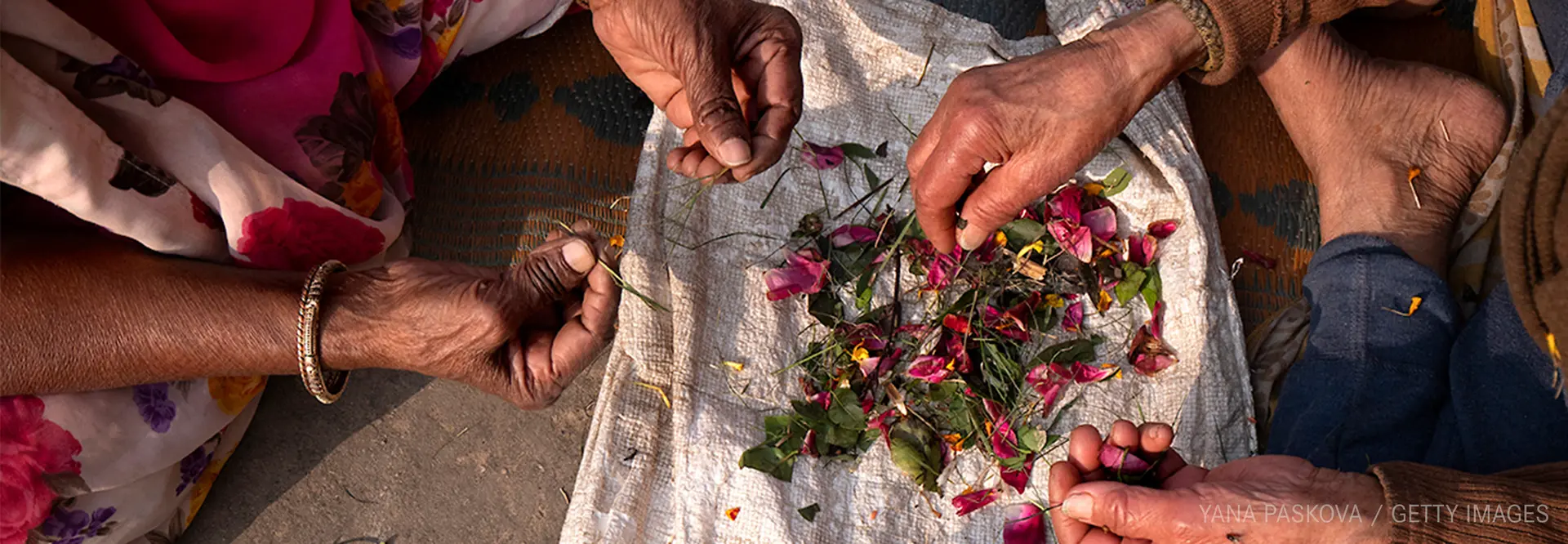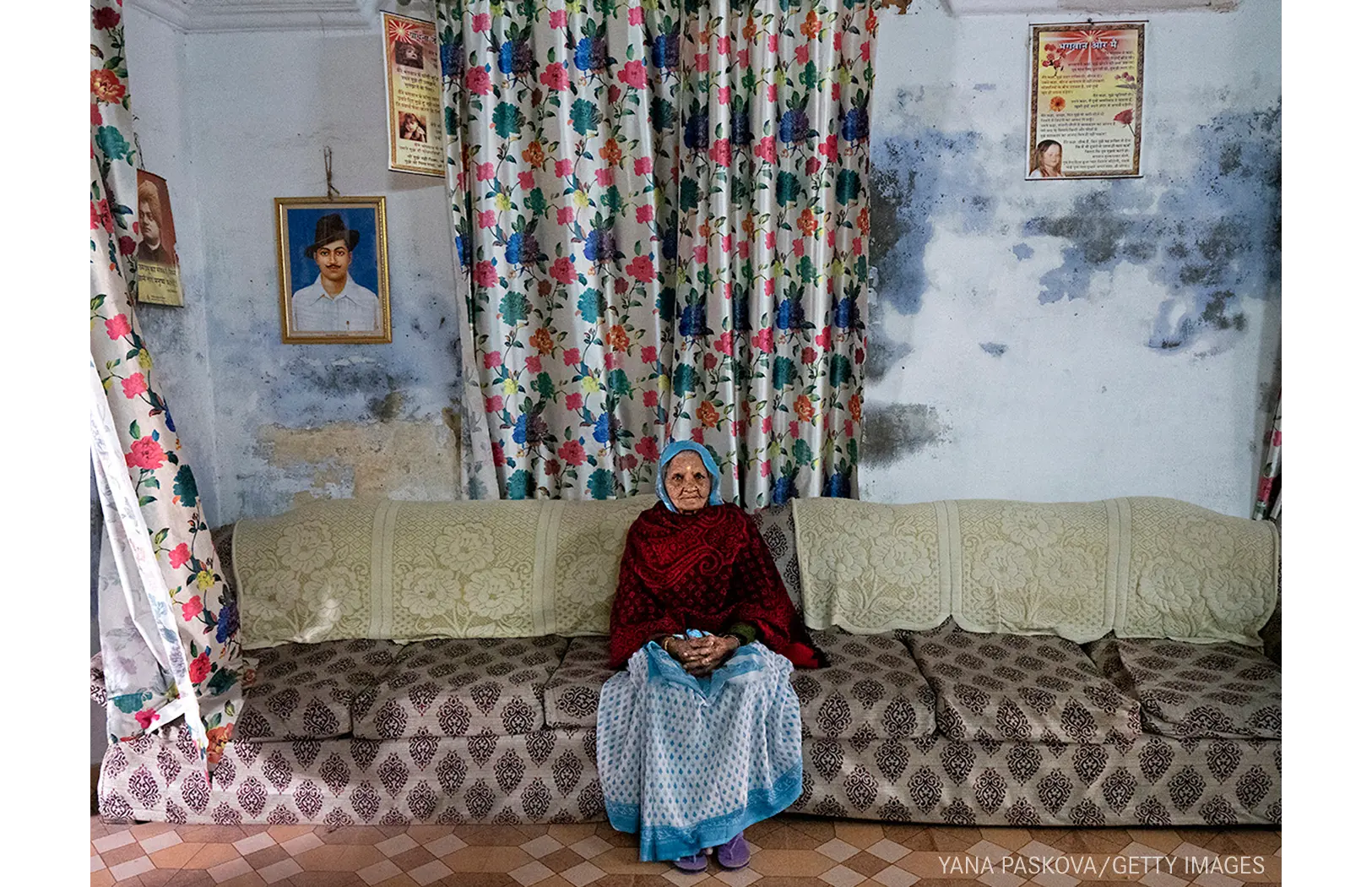
Her Legacy
Yana Paskova
Learn what inspired Yana Paskova to create her series "Where Women Rule" and the story behind it.
1. Tell us why you chose to pursue “Where Women Rule”.
I started this project on the observation that even where women rule, matriarchy is not a concept readily available in societal imagination. One certain way to challenge stagnant definitions of equality is to upend artificial constructs of gender, class and geography that may not serve its denizens equally. As a political asylum immigrant to U.S. shores, I care to intensify humans’ understanding of the harmful divisions between us — as well as connect the work I do behind the camera as a female journalist in a male-dominated industry, to how women experience the world in front of it.
Not in recent history have communities where women seek shelter, independence or support, been more relevant to our cultural climate and growth. Discarding toxic, inflexible gender roles is an evergreen and pressing idea and what the modern family unit aims to look like, increasingly across the world.
And so, “Where Women Rule” aims to be a visual and sociological look at what happens when cultural norms of gender are amended or removed — via the all-female societies across the world, where women gather for shelter or in matriarchy — leading us to new notions of femininity and masculinity, human bonds, family and the fluid boundaries of identity.
2. What message are you hoping to convey through “Where Women Rule”?
It is the intersect of these women’s stories as individuals and as a collective that I’d like to discover, amidst arresting visual landscapes — with special attention to perseverance in the face of rejection and confidence in shedding convention. I plan to capture the striking culture of all-female societies and seek out the special bond between women in solidarity through traditions and objects that form one's identity, or show individual courage and community. The deeply anthropological nature of examining gender, matriarchy and patriarchy, would render this not just a project of visuals and words, but also one that will pull expertise from the social sciences, political, economic and social justice arenas.
My intent for this project's findings is that they serve as immersive experiences not only to consumers of visual culture, but also as research and educational tools — hopefully starting with the youngest minds, where developing the concept of equality matters most. Ultimately, I'd like to build connections between humans that overcome the restricting societal constructs of gender and geography.
3. Of all the images you have made from “Where Women Rule," which one is most important to you?
In this project's first set of images, I photographed India's all-widow communities (via a Getty grant,) where women escape family that has become abusive or neglectful after the loss of their husbands and gather in ashrams for shelter, a daily meal, and a community of women in the same circumstance. I was most drawn by the bonds of friendship and nascent rebellion against damaging norms that forms despite tradition's insistence on exiling widows. More of them had indeed started to defy society's identity ties to marriage by allowing themselves to celebrate holidays and wearing color — despite the expectation of joylessness and clothes in all white, the hue of death and asexuality.
Each woman offered a unique but relateable account of loss, hope, pain or triumph, so it is impossible to pick just one image that stands out in import. But if seeking out the feeling of being an outsider looking onto the passing of life and time, frivolously segregated from even its most mundane joys (which is what all victims of harassment, abuse or trauma experience at some point,) then I’d choose the picture of the widow suspended on a sidewalk, motionless against street traffic. Although I could not show the longing on her face (as she wished to remain unidentifiable) and we only see her shrouded shoulders against the city's animation just beyond, I find it easy to connect with her isolation and forlorn, quite human wish to belong.
4. What are some of the challenges you’ve encountered in your visual storytelling, and how did you approach these issues?
Access to the people and institutions that complete a story is always a challenge, as there could always be more of it. Financial resources, time and social connections directly affect that access, so grants like these do make an impact.
Other imperatives are consistent, clear communication on the project's goals, as well as understanding each community’s unique culture and individual’s comfort level. I try to prioritize truthful, catchy storytelling on par with learning each person's and community's boundaries as I become a part of their lives, to avoid confusion or intrusion.
A common rut we face as journalists hides in the predictability of words or pictures. So in addition to traditional storytelling methods, I enjoy more innovative styles of visual speak, whether via diptychs or juxtaposed layers (like double- or triple-exposures,) to compare and contrast the places, people and ideas I visit.
5. What is a piece of advice offered to you, related to photography, that has been most valuable to you?
I received invaluable advice early in my career — to insist on one's style. This has proven ever-relevant since the arts, whether in language or visuals, are often subjective both in their execution and in their interpretation, and are often the craft of the modern precariat (in journalism’s case, this being the non-affluent freelancer.) Thus, the intent and influence of art itself is susceptible to many pressures. I think this makes one’s growth as a journalist essential in a highly personal but also a communal way, especially when free of middling trends, corporate greed or creativity-subsuming control, which takes a strong subscription to one’s evolving vision of self and the world. That, amongst other fortunate or unfortunate things — like money, empathy and luck.

Connect with Yana
Learn more about "Where Women Rule" here.
Continue the journey with Yana Paskova on social media:
Instagram: @YanaPaskova
Twitter: @YanaPaskova
Website: www.yanapaskova.com
View the rest of "Where Women Rule" at Leica Gallery Boston
